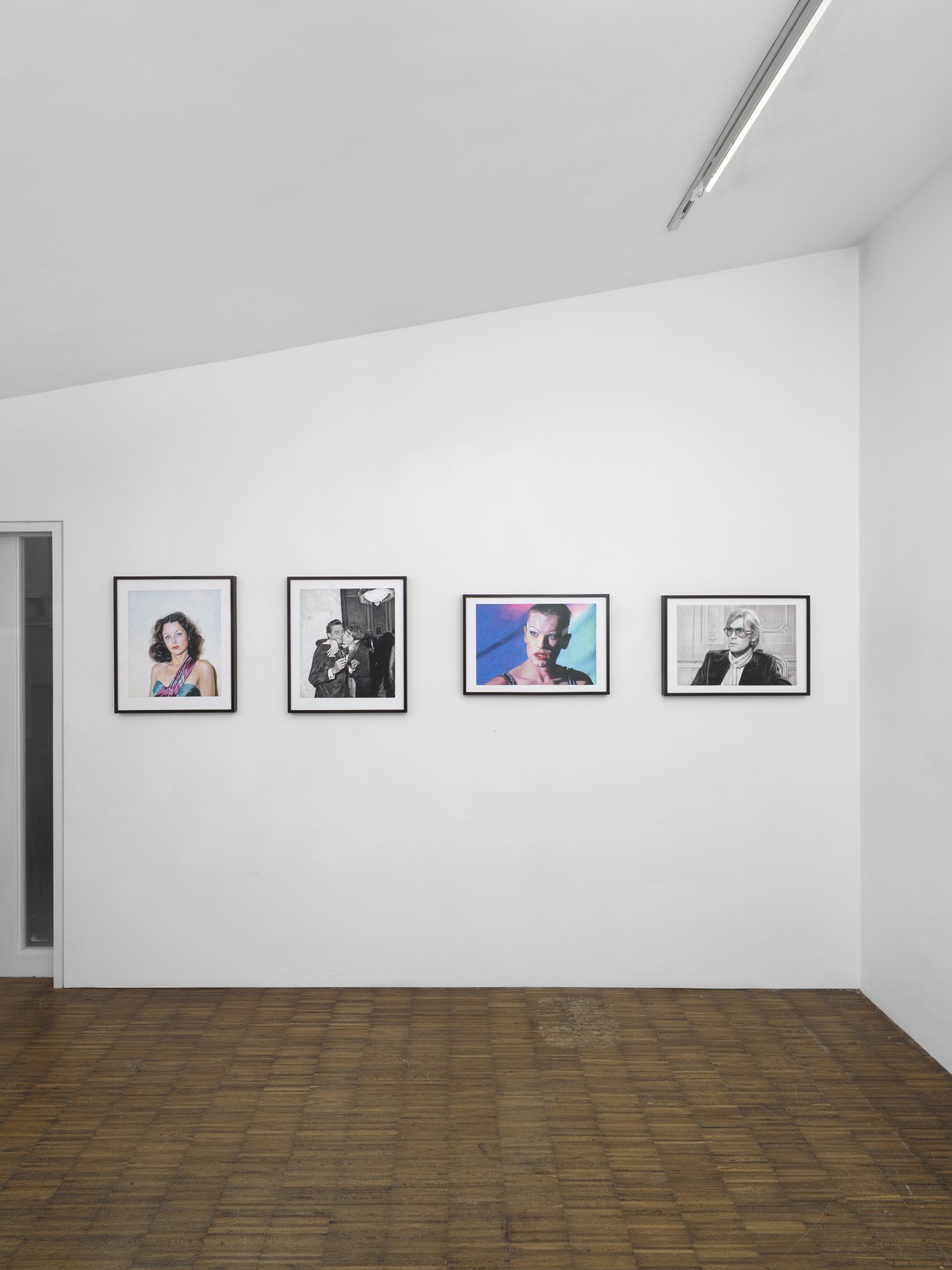SNAILS AND OYSTERS
COB GALLERY | LONDON, 2024
15 April —18 May 2024
Cob Gallery
205 Royal College St
London NW1 0SG
Cob presents Snails and Oysters - a suite of four new drawings by Nina Mae Fowler.
These works are the combined result of the artist’s forensic research methods, her personal fandom and an instinctive creative process - where found images linger in her studio until they resonate with one another and then are transformed into drawings. It is arguable that the subjects of these four drawings are brought together for the ambiguities and the conflicts that arose between their private lives and public personas - the former deemed unorthodox by society at the time of their fame. Meanwhile, this new series sees the artist experimenting further in the coloured pencil medium.
The series title Snails and Oysters refers to a scene between Laurence Olivier and Tony Curtis that was controversially cut from Stanley Kubrick’s Spartacus for nearly 30 years owing to its reference to bisexuality. What had been, in 1960, a brave attempt by scriptwriter Dalton Trumbo to reflect the nuances of Greek and Roman attitudes to same-sex love and intimacy is now a straightforward depiction of homosexuality. The National Legion of Decency— which was a front for the Catholic Church —had vetoed the scene, and it fluttered to the cutting room floor.
The inspiration for this series began with the passing of Helmut Berger in May 2023 - an actor previously unknown to Fowler. Berger was the lover of Italian filmmaker Luchino Visconti; a renowned hedonist and known for his portrayal of narcissistic and sexually ambiguous characters. Three of the four drawings in this series depict Berger - one image is taken from a televised interview, whilst another vibrant coloured drawing depicts him in his breakthrough role in Visconti’s The Damned (1969) - where his character impersonates a Marlene Dietrich-like cabaret singer. As Fowler’s research intensified, she discovered an image of the actor Dirk Bogarde and Berger embracing at a party which forms the third image- Bogarde also a star of Visconti’s films. Here, Fowler draws a parallel between these men - that being their defiance of mainstream norms and bold approach to filmmaking. Meanwhile, both Berger and Bogarde hid their sexuality from view to maintain their box office appeal. As Fowler creates her drawings, she builds new connections which seek to clarify the artworks purpose in her mind - here Fowler honed in on a contrast between Helmut Berger's disinterest in his own fame and the emotional depth of his character in The Damned that mirrored the complexities of his life.
With Fowler always seeking to push the boundaries of the drawing medium, the two seemingly monochromatic drawings in the series see Fowler apply a new technique where subtle colour is injected around the edges of the highlights and lowlights, creating a pulsating effect across the drawing.
Here, the artist is emulating an effect called ‘moiré fringes, which is caused by the interference patterns that arise when two regular textures with similar but slightly different frequencies or orientations overlap or interact. The colours subtly infused into the drawings could be viewed as a glitch or patch of noise, disrupting convention and expectation - just like the subjects themselves.
The fourth drawing depicts the Golden Age cinema actress Hedy Lamarr. Reminiscent of a Warhol polaroid, the drawing is taken from a very unusual coloured photograph of Lamarr. slightly dishevelled and in costume for her role in Samson and Delilah (1949). Fowler returns to Lamarr as a subject - a renowned beauty - considered to be the most beautiful woman in the world at one stage - but overlooked as an extraordinary inventor (she in fact invented the technology that underpins bluetooth and WiFi). Fowler describes her connection with this image as “she looks like a woman who is so impossibly tired of her face being used. Slightly sweaty, bruised. She was decades ahead of her time and her looks overshadowed one of the most remarkable inventive brains of the 20th century. Consistently underestimated during her lifetime - I feel you can see this behind her eyes here.”


